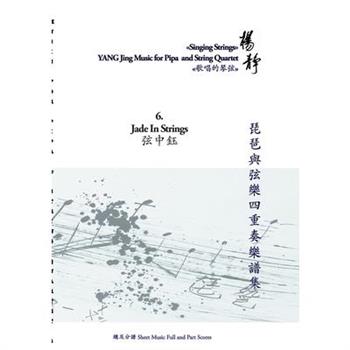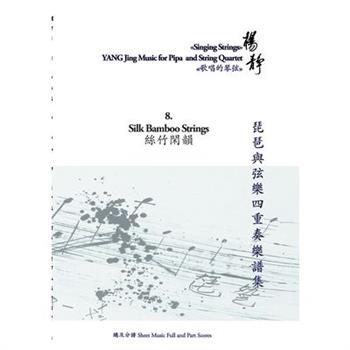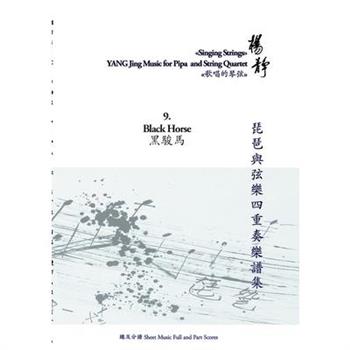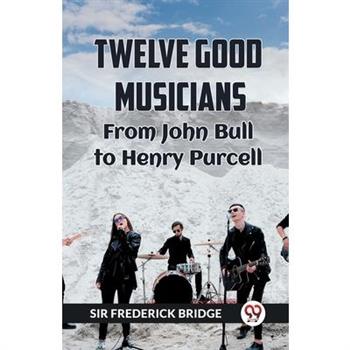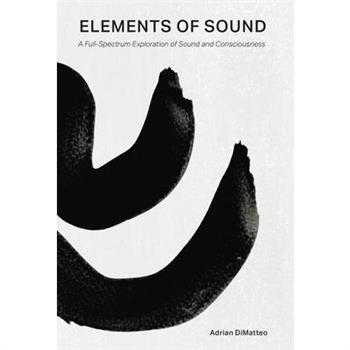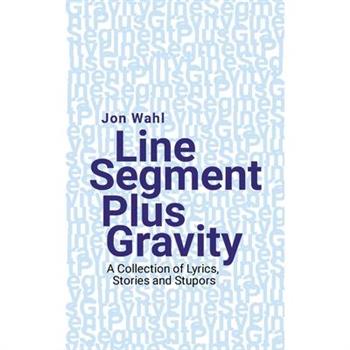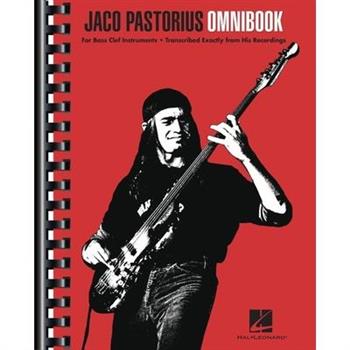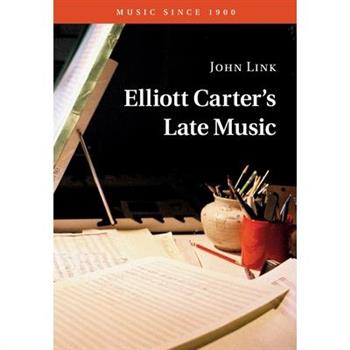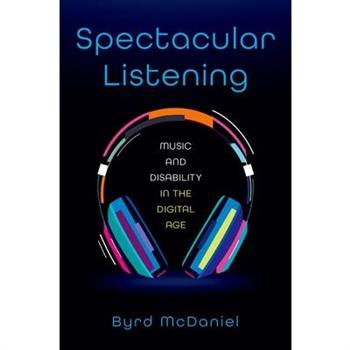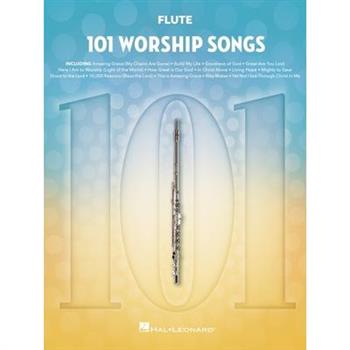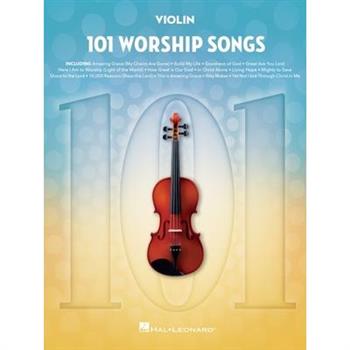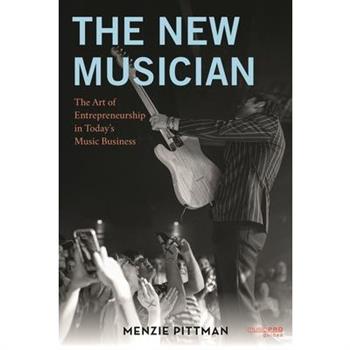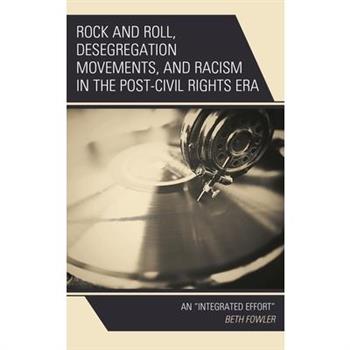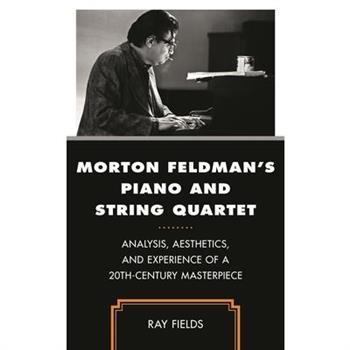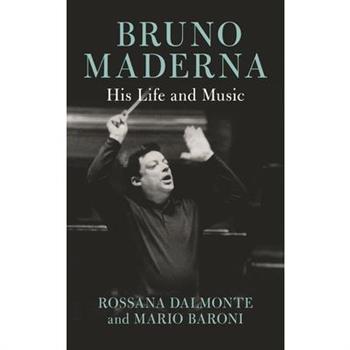Henrik Rung
Who would have thought you could play classical music on a ukulele? But you can! Here are compositions from the Romantic Era by Henrik Rung. These pieces have been transcribed for low G ukulele and begin fairly easy but become more complex as you progress. Recommended for Intermediate to Advanced performers. Have fun!
David Lynch
Director David Lynch is best known for films that channel the uncanny and the weird into a distinct "Lynchian" aesthetic, in which sound and music play a key role: Lynch not only writes his intended sounds into the script but also often takes on the role of creating the sounds himself. This concise study explores what makes Lynch's sonic imprint distinct, breaking down three different sound styles that create Lynch's sound aesthetic across his films. Showing how sound offers new insights into the aesthetic and narrative work of Lynch's filmmaking, this book highlights new dimensions in the work of a key American auteur and deconstructs the process of building a unique sound world.
Book 6. Jade In Strings
This series of music for pipa with string quartet is part of the classical concerts program. Stringed instruments form the backbone of the Western classical symphony orchestra. The Eastern string instrument Pipa developed into a leading solo instrument as early as the Tang dynasty (618 - 709) in the East. In this set of classical concert programs, all pieces maintain the original and natural acoustic sound source of unplugged string instruments. It enables the encounter of different acoustic properties, different expressions of sound, and sound aesthetics that have developed over time in different regions. This Program lets old & new string instruments offer us an unforgettable musical experience _ from the fresh energy of the morning to the poetry of the sunset - from a silk bamboo tea house to a passionate dance in the desert of the Wild West - from the search for one's own identity to the singing of swinging hearts - from pearls falling on to a jade plate to the gallop of black horses... Each piece opens up a new perspective.
Book 8. Silk Bamboo Strings
This series of music for pipa with string quartet is part of the classical concerts program. Stringed instruments form the backbone of the Western classical symphony orchestra. The Eastern string instrument Pipa developed into a leading solo instrument as early as the Tang dynasty (618 - 709) in the East. In this set of classical concert programs, all pieces maintain the original and natural acoustic sound source of unplugged string instruments. It enables the encounter of different acoustic properties, different expressions of sound, and sound aesthetics that have developed over time in different regions. This Program lets old & new string instruments offer us an unforgettable musical experience _ from the fresh energy of the morning to the poetry of the sunset - from a silk bamboo tea house to a passionate dance in the desert of the Wild West - from the search for one's own identity to the singing of swinging hearts - from pearls falling on to a jade plate to the gallop of black horses... Each piece opens up a new perspective.
Book 7. Singing Strings - Heart Swing
This series of music for pipa with string quartet is part of the classical concerts program. Stringed instruments form the backbone of the Western classical symphony orchestra. The Eastern string instrument Pipa developed into a leading solo instrument as early as the Tang dynasty (618 - 709) in the East. In this set of classical concert programs, all pieces maintain the original and natural acoustic sound source of unplugged string instruments. It enables the encounter of different acoustic properties, different expressions of sound, and sound aesthetics that have developed over time in different regions. This Program lets old & new string instruments offer us an unforgettable musical experience _ from the fresh energy of the morning to the poetry of the sunset - from a silk bamboo tea house to a passionate dance in the desert of the Wild West - from the search for one's own identity to the singing of swinging hearts - from pearls falling on to a jade plate to the gallop of black horses... Each piece opens up a new perspective.
Book 9. Black Horse
This series of music for pipa with string quartet is part of the classical concerts program. Stringed instruments form the backbone of the Western classical symphony orchestra. The Eastern string instrument Pipa developed into a leading solo instrument as early as the Tang dynasty (618 - 709) in the East. In this set of classical concert programs, all pieces maintain the original and natural acoustic sound source of unplugged string instruments. It enables the encounter of different acoustic properties, different expressions of sound, and sound aesthetics that have developed over time in different regions. This Program lets old & new string instruments offer us an unforgettable musical experience _ from the fresh energy of the morning to the poetry of the sunset - from a silk bamboo tea house to a passionate dance in the desert of the Wild West - from the search for one's own identity to the singing of swinging hearts - from pearls falling on to a jade plate to the gallop of black horses... Each piece opens up a new perspective.
TWELVE GOOD MUSICIANS From JOHN BULL to HENRY PURCELL
"Twelve Good Musicians" by Sir Frederick Bridge is a splendid painting that showcases the writer's insights into the lives and contributions of twelve prominent musicians. Bridge, a prominent English organist, composer, and conductor, offers a series of biographical sketches that highlight the achievements and affects of these musicians on the arena of classical tune. The book features a various selection of musicians from special ancient periods and genres, providing a complete evaluate of their artistic accomplishments. Bridge's writing displays a deep appreciation for the people he profiles, exploring now not most effective their musical capabilities but additionally their personal backgrounds, struggles, and the cultural contexts in which they thrived. Bridge's selection of "Twelve Good Musicians" encompasses more than a few composers and performers, allowing readers to gain a nuanced know-how of the evolution of musical expression. The book is characterized by its informative yet attractive narrative style, making it reachable to each song enthusiasts and popular readers interested in the lives of outstanding figures. Through "Twelve Good Musicians," Sir Frederick Bridge contributes to the broader appreciation of classical tune, presenting a nicely-rounded exploration of the lives and legacies of key figures within the musical canon.
Elements of Sound
Elements of Sound explores the relationship between sound and consciousness at the intersections of science, spirituality and music theory. DiMatteo's approach draws inspiration from ancient and modern thinkers, scientists and indigenous wisdom-keepers, relating sound as both a primal mystery and a practical tool for communication, healing and transformation. Weaving together diverse perspectives, Elements of Sound compares global traditions of song, poetry, storytelling and sacred language. It invites us to consider how sound and silence frame our innermost thoughts, and to be aware that sound itself constitutes our beliefs, identities and the words we use to define reality. Influenced by such classics as The Mysticism of Sound and Music by Hazrat Inayat Khan and The Kybalion by Three Initiates, Elements of Sound penetrates the cosmology, esotericism and philosophy of sound and music, suggesting that thoughts are subtle forms of sound which impact our psychophysiological health. Drawing from decades of experience in academic, clinical and ceremonial settings, DiMatteo conveys the relevance of sound, music and language across human culture. Spiritual seekers, curious minds and students of music will find an oasis of inspiration in his work, along with a common language to discuss what might otherwise seem ineffable. Neuroscientist and cognitive psychologist Daniel Levetin wrote, "Music may be the activity that prepared our pre-human ancestors for speech communication and for the very cognitive, representational flexibility necessary to become humans." Music and language are prehistoric, but traces of our ancient origins remain preserved in the mythologies and aural teachings of humanity's living traditions. To learn, to express and to share are intrinsically human. They connect us through sound to the power of creation, and to vibration as a property of reality. Elements of Sound encourages us to consider how we relate to sound in our daily lives-what we hear, how we interpret it, and how we respond to the world within and around us. "Music is a limited term. Sound encompasses melody, harmony, speech, thought and a universe full of vibrations." - from Elements of Sound
Line Segment Plus Gravity
LINE SEGMENT PLUS GRAVITY is a collection of lyrics and anecdotes written by Los Angeles musician Jon Wahl, whose career has careened through the eighties punk days to grunge and indie rock of the nineties and onward into the new millennium. Through these pages, Jon has tied a sinuous line between emotions and geography, economics, music scenes, death, love and (of all things) pigeons. Here are fifty-two songs spread out in twelve chapters told in narrative about the journey of someone looking for love and kindness, though it seems he really didn't know he was looking for anything. As the frontman for the twisted punk/blues band Claw Hammer and his own project The Amadans, Jon's lyrics were written through a filter of e.e. cummings, Don Van Vliet and Mina Loy, washed down with a few bottles of wine and generated through a jillion footsteps.
Background Music Cultures in Finnish Urban Life
This Element focuses on how music is experienced, articulated, and reclaimed in urban commercial environments. Special attention is paid to listeners, spaces, and music, co- and re-produced continuously in their triangular relationship affected by social, legal, economic, and technological factors. The study of the historical development of background music industries, construction of contemporary sonic environments, and individual meaning-making is based on extensive data gathered through interviews, surveys, and fieldwork, and supported by archival research. Due to the Finnish context and the ethnomusicological approach, this study is culture-sensitive, providing a fresh 'factory-to-consumer' perspective on a phenomenon generally understood as industry-lead, behavioral, and global. This title is also available as Open Access on Cambridge Core.
Jaco Pastorius Omnibook for Bass Clef Instruments Transcribed Exactly from His Recordings
(Bass Transcriptions). Called the world's greatest bass player, Jaco Pastorius left a permanent mark on the music world despite his tragically short life. This combbound collection provides an invaluable opportunity to study note-for-note transcriptions of 43 of his recordings. A must-own for any bass player's library! 43 works, including: Amerika * Barbary Coast * Birdland * Black Crow * Black Market * Blackbird * Bright Size Life * The Chicken * Chromatic Fantasy * Come On, Come Over * Continuum * Dara Factor One * Donna Lee * The Dry Cleaner from Des Moines * 4 A.M. * God Must Be a Boogie Man * Good Question * Harlequin * Havona * Hejira * I Can Dig It Baby * Invitation * Kuru * Liberty City * Mood Swings * Night Passage * Okonkole Y Trompa * Opus Pocus * Palladium * Port of Entry * Portrait of Tracy * Punk Jazz * A Remark You Made * River People * Slang * Speak like a Child * Speechless * Talk to Me * Teen Town * Three Views of a Secret * Unquity Road * (Used to Be A) Cha Cha * Word of Mouth. Includes tab!
Megaliths, Music, and the Mind
What drove the building of the first megalithic monuments and lifestyle changes that launched Western civilization? This exploration of the human experience of special sound in ancient ritual and ceremonial spaces brings a new perspective for anyone with an interest in prehistory and human development in its most pivotal days. From G繹bekli Tepe in Anatolia to megalithic temples in Malta to passage tombs in Ireland, the world's oldest buildings and the newest scientific research combine for a look at the Western Neolithic Revolution that goes where no one has gone before. With original photos and illustrations, Megaliths, Music and the Mind assembles content from the worlds of archaeology, architecture, anthropology, ethnomusicology, genetics, neuroscience, physics, and more. Fascinating pieces of evidence are set side by side, resulting in a stunning premise. This book is a core overview focused on the rediscovery of an ill-understood sensory element of developing culture, with hope for therapeutic application in the modern world. Material from the out-of-print booklet Listening for Ancient Gods has been expanded and updated in this volume, which also includes select papers from OTSF Archaeoacoustics International Conferences, plus a personal account from one of the founding fathers of new-age music.
Material Cultures of Music Notation
Material Cultures of Music Notation brings together a collection of essays that explore a fundamental question in the current landscape of musicology: how can writing and reading music be understood as concrete, material practices in a wider cultural context? Drawing on interdisciplinary approaches from musicology, media studies, performance studies, and more, the chapters in this volume offer a wide array of new perspectives that foreground the materiality of music notation. From digital scores to the transmission of manuscripts in the Middle Ages, the volume deliberately disrupts boundaries of discipline, historical period, genre, and tradition, by approaching notation's materiality through four key interrelated themes: knowledge, the body, social relations, and technology. Together, the chapters capture vital new work in an essential emerging area of scholarship.
Serge Gainsbourg
Serge Gainsbourg is arguably the Francophone songwriter whose contribution to the international appeal of French popular music has been the most significant in the post-war era. Sampled by Beck, De La Soul, Massive Attack and Fatboy Slim, remixed by Howie B. and David Holmes, translated by Mick Harvey, and covered by Iggy Pop, Donna Summer, Portishead, Madeleine Peyroux, the Pet Shop Boys and Franz Ferdinand, his music has crossed borders in a way no other modern French-language singer-songwriter's has. The interdisciplinary approach of Serge Gainsbourg: An International Perspective engages in a dialogue between musicology, film and media studies, literature, cultural studies, gender studies, and more, revealing the broad scope of Gainsbourg's impact in and outside of France, from the late 1950s through today. Bringing together a large selection of scholars from across the world, this collection of 26 chapters emphasizes his unique position in French culture, covering issues such as his musical influences and collaborations, esthetics and form, his experimentations with disciplines other than music (mainly film and literature), not to mention the conversation at play between high art and mass culture in this artist's multifaceted body of work.
Tam Tam Mandingue Djembe Academy Curriculum Book 1
This book was created by Grand Master Drummer Mamady Keita, from Guinea, West Africa for his international schools, the Tam Tam Mandingue Djembe Academy, International Schools of Percussion. Specifically, this is curriculum and instruction for traditional djembe and dunun (djembe orchestra) music. It also includes instruction on djembe and dunun technique. This volume features 63 traditional djembe rhythms in box (aka "matrix") notation as well as Western stave notation. In addition, each rhythm features oral history (ethnographic information) as well as maps showing geographic origins.
Music in the Mayhem
A lot can happen in 366 days. Especially in the United States. One might even decide to do something crazy. Like listen to a music album every single day. And then journal about it. That's exactly what Yellie Hart did. It's no secret that the year 2020 was a rollercoaster ride for nearly everyone on the planet. But Yellie decided to document her personal spree of ups and downs while listening to music. She chose an album a day, every day, for an entire year. Little did she know a that a Pandemic would happen. That she'd spend an extraordinary amount of time in her basement. Toilet Paper would be fought for. Riots would break out everywhere. Little pieces of fabric would become as divisive as abortion. The Capitol would be attacked. Schools would be closed. And Texas would freeze over. What she discovered was: Music in the Mayhem. In this very personal journey Yellie Hart shares her remarkable experiment of deliberately listening to music daily. She candidly shares her discoveries as she charts her way through an unprecedented time in her own life, and of life on this planet.She weaves her way through many wonderful musical genres-- often matching the mood of the moment. 366 albums in all.She daringly shares her observations of both the music and American culture; her findings as well as her joys and her sorrows.Her devoted human spirit magically pulls it all together through an uplifting documented triumph of musical discovery.Yellie Hart is a GenX woman, born and raised just outside of Denver, Colorado. Normally, when she isn't spending time in her basement, she is with her wonderful guy and family. She of course loves music and dancing as well as cooking, traveling, and eating ice cream. Yellie aims to provide mutually beneficial insight by offering perspectives through writing, art, conversation, and gathering. Music in the Mayhem is her first full length book.
Elliott Carter’s Late Music
The first comprehensive study of the late music of one of the most influential composers of the last half century, this book places Elliott Carter's music from 1995 to 2012 in the broader context of post-war contemporary concert music, including his own earlier work. It addresses Carter's reception history, his aesthetics, and his harmonic and rhythmic practice, and includes detailed essays on all of Carter's major works after 1995. Special emphasis is placed on Carter's settings of contemporary modernist poetry from John Ashbery to Louis Zukofsky. In readable and engaging prose, Elliott Carter's Late Music illuminates a body of late work that stands at the forefront of the composer's achievements.
The Opera
R. A. Streatfeild's classic novel "The Opera" provides readers with an enthralling insight into the realm of the performing arts. Some stories are gruesome and bizarre, while others softly creep up on you and pull you in. The story unfolds against the backdrop of London's opera scene in the beginning of the twentieth century, providing a rich tapestry of individuals and action. The book follows different significant people, including aspiring singers, musicians, and actors, as they traverse the ups and downs of the opera industry. The work's core themes involve ambition, love, rivalry, and the quest of artistic perfection. The linked journeys of the characters create a dynamic story which keeps readers fascinated from beginning to end. Streatfeild's writing style is distinguished by vivid descriptions and complex character development. Readers are immersed into the glamorous and challenging world of opera production through the pages of "The Opera," experiencing the joys and heartaches of its heroes.
American Music
When early settlers came to America they often brought few material items, but they brought many customs, traditions, and music of their homeland here. These things, mainly the music took root in America's soil and grew. These emigrants came for many different reasons. Some came to escape poverty and find a better life. Many were forced out of their homeland by war. There were many who had no choice but were torn from their families and homes and brought here. Unlike some versions of history state, this was not a land someone had "discovered." There were indigenous groups with established cultures who had lived here for thousands of years. In spite of the misconception that all Indians wore feathers, lived in teepees, and had the same culture, Native American music and culture differed regionally and from tribe to tribe. They each had their own music as well. America really was a melting pot then. The music of Native Americans, white settlers, and the Black enslaved people mingled to create new forms and songs from Delta blues and "hillbilly" music, to rock. My biggest question is does the music reflect the culture, or does the culture reflect the music? This is the history of American music. It's the music of the people. From its birth in the 1700s through the 1970s. As you look at the history of music, you look at American history. It's not always a pretty story. Sometimes labor pains are hard, but in the end, it shouts loud and clear, "I was Born in the USA!"
Idles X Magda Archer Brutalism
"I want to move into a Bovis home and make a list of everything I own. And ride into the amber setting sun, marching to the beat of someone's drum. I'm done" --IDLES, "Heel/Heal"In this celebration and reinterpretation of IDLES' critically acclaimed first album, Brutalism (2017), Magda Archer's artwork enters a joyful and liberating shouting match with Joe Talbot's lyrics to create an explosive, emotive, comedically sardonic, and inspiring collaboration between two like-minded artists.Typographic layouts inspired by the style of concrete poetry create a visual conversation between lyrics and illustrations on the page. IDLES' first-ever book marks a new and exciting form of creative collaboration for the band. Breathing a different kind of life into Talbot's fiery lyricism--with expressive typography, hot-pink ink, and Archer's unique artworks--IDLES x Magda Archer Brutalism shows that a book can be a work of art in itself.
The Life and Writings of Ralph J. Gleason
Discover the enthralling world of Ralph J. Gleason, a pioneering music journalist who expanded the possibilities of the newspaper music column, sparked the San Francisco jazz and rock scenes, and co-founded Rolling Stone magazine. Gleason not only reported on but influenced the trajectory of popular music. He alone chronicled the unparalleled evolution of popular music from the 1930s into the 1970s, and while doing so, interviewed and befriended many trailblazers such as Miles Davis, Dizzy Gillespie, Bob Dylan, and the Beatles. A true iconoclast, he dismantled the barriers between popular and highbrow music, and barriers separating the musical genres. He played a crucial role in shaping postwar music criticism by covering all genres and analyzing music's social, political, and historical meanings. This book uncovers never-before-seen letters, anecdotes, family accounts, and exclusive interviews to reveal one of the most intriguing personalities of the 20th century.
It’s How You Flip It
The cultural practices of hip-hop have been among people's favorite forms of popular culture for decades. Due to this popularity, rap, breaking, graffiti, beatboxing and other practices have entered the field of education. At the intersection of hip-hop and music education, scholars, artists, and educators cooperate in this volume to investigate topics such as representations of gangsta rap in school textbooks, the possibilities and limits of working with hip-hop in an intersectional critical music pedagogy context, and the reflection of hip-hop artists on their work in music education institutions. In addition, the contributors provide ideas for how research and theory can be transferred and applied to music educational practice.
Rautavaara’s Journey in Music
Einojuhani Rautavaara (1928-2016) has been called Finland's most notable musical export after Sibelius. His prolific output includes eleven operas; eight symphonies; eleven concertos; choral works for the Orthodox, Lutheran, and Roman Catholic churches; secular choral works; chamber music; vocal solos; and keyboard works. Many of these works were commissioned by internationally known performers and ensembles including Vladimir Ashkenazy, Richard Stoltzman, Hilary Hahn, Anne Akiko Meiers, Gerald Finley, the Philadelphia Orchestra, and the Juilliard School of Music Orchestra. Perhaps most frequently performed are his Cantus Arcticus, a concerto for recorded arctic birds and orchestra, Angel of Light, his seventh symphony, and the Lorca choral suite depicting Death as a stalker in a Spanish village. Rautavaara's Journey in Music is divided into two sections; the first a biography and discussion of works that show his various style changes, from neoclassical, to twelve-tone, to neoromantic, and finally to a personal expressive style combining elements of twelve-tone and tonality. The second part divides his works by genre and gives more detailed information of stylistic analysis, libretto, provenance, and, often, reception.
Mertz in America
During the late nineteenth and early twentieth centuries, North American guitarists showed great interest in the compositions of European guitar composers. The guitar works of J. K. Mertz (1806-1856) were clearly favored among the American virtuosi at that time as confirmed in concert programs, in correspondence, and in the numerous American fretted instrument journals, such as Cadenza, Crescendo, S. S. Stewart's Banjo and Guitar Journal, and Etude. This study provides a detailed survey of these sources, as well as collections, archival materials, and manuscripts pertaining to Mertz during this period. Information concerning the life and works of J. K. Mertz and his reception in Europe is followed by an introduction to the guitar in America and an assessment of the stature of Mertz's music in America at the time. Subsequent chapters provide new biographical data for prominent American guitarists including Charles J. Dorn, Arling Shaeffer, Walter Vreeland, C. D. Schettler, C. F. Elzear Fiset, Jennie M. Durkee, Vahdah Olcott-Bickford, William Foden, George C. Krick, J. M. and Gertrude Miller, and Carl W. F. Jansen. Chapters 11-13 chronicle the pertinent activities of these guitarists that resulted in the preservation of significant manuscript copies of Mertz's works. Manuscript copies of three previously lost concert works by Mertz preserved in American collections are described. Further topics included are Mertz in American pedagogical writings, the dissemination of his music, and associations between American and European guitarists. The conclusion discusses the introduction of the music of T獺rrega and his followers to American guitarists. PART I. BACKGROUND Chapter 1. Biography 2. The Music of J. K. Mertz 3. The Popularity of Mertz in Europe ca. 1885-1925 4. The Guitar in America ca. 1885-1925 PART II. RECEPTION HISTORY 5. The Stature of the Music of Mertz in America ca. 1890-1925 6. Vahdah Olcott-Bickford 7. St. Louis Guitar Zenith 8. The Miller Family 9. Carl W. F. Jansen 10. J. K. Mertz in American Pedagogical Writings PART III. THE DISSEMINATION OF THE MUSIC OF MERTZ 11. Associations Between American and European Guitarists 12. Availability of Published Music of Mertz in America ca. 1870-1925 13. Manuscript Copies of Works by Mertz Preserved in American Collections PART IV. CONCLUSION 14. The Introduction of the Music of T獺rrega and His Followers to North American Guitarists
Spectacular Listening
Imagine a powerful listening experience that you want to share with others. You could describe it to someone with words, or you may choose a flashier alternative. You could, for example, costume yourself and take to the stage in a famous concert venue, delivering a rousing air guitar interpretation of a beloved rock solo for a live audience. Maybe you seek something more subtle, so you pull out your smartphone and record yourself lip-syncing to a guilty pleasure, showing your followers how seamlessly the music fits your movements. Perhaps instead you want others to hear how the music makes you feel, which leads you to record a podcast episode that translates the thrill of listening into audible exclamations. In ways both mundane and sensational, listening can be an expressive act, enabling people to stage consumption as a public practice -- what author Byrd McDaniel calls "spectacular listening." Contemporary digital platforms not only support such activity but actively encourage people to package personal music reception into a performance that may be widely shared. With a range of compelling ethnographic case studies, McDaniel investigates a broad shift in contemporary listening norms and the stakes for listeners with disabilities. He reveals how listening-as-performance can be an opportunity for play, as well as a critical practice that exposes ableism in music institutions, technologies, and discourse.
Under the Sea Piano Camp
Under The Sea piano camp is an extraordinary musical adventure for children aged 4-6. With a captivating story, this camp offers a delightful blend of music, creativity, and exploration. Students will engage in ocean-themed singing, lively Flamenco dancing, and piano lessons while enjoying the fun of playing in the sand and water. They will also savor delicious Under-the-Sea snacks, and the camp culminates with a performance of three original piano pieces, showcasing the students' progress and the magic they've experienced throughout the camp. Deliver an Under The Sea piano camp and dive into a world of musical enchantment. This unique camp allows young learners to explore their musical talents and ignite their imagination. With a focus on exploration, creativity, and musical development, this camp promises an unforgettable experience that will inspire your students' lifelong love for music. There's an incredible journey Under the Sea!
Gilberto Gil - Musical Trajectory
Gilberto Gil (1942- ) is not just a musician. From an icon of the counterculture to Minister of Culture, he is the purest manifestation of what it means to be a Brazilian popular artist."In the process of writing songs, you discover you can talk about everything. You must talk about everything. A song must be an instrument for exploring the general complexity that inhabits you." This volume of Musical Trajectories includes an essay about Gilberto Gil's life and work, two original interviews with the artist (2019 and 2020), and an extended discography.
Bert Transcribed: Volume 2
(Guitar Recorded Versions). Bert Transcribed - The Bert Jansch Songbook, Volume 2 presents 30 more songs by the legendary guitarist and singer-songwriter, Bert Jansch. Each song has been meticulously transcribed and annotated by an international team of leading Jansch experts to detail every aspect of Bert's ground-breaking style and technique. For this volume, they have also been fortunate to reference some of Bert's own newly discovered tentative work in this field, experimenting with software in the 1980s. This book therefore presents the most accurate and definitive transcriptions of Bert's music that have ever been published. Song highlights include: Come Back Baby * Courting Blues * Go Your Way My Love * I Am Lonely * It Don't Bother Me * One for Jo * Tell Me What Is True Love * A Woman Like You * and more!
101 Worship Songs for Flute
(Instrumental Folio). This glorious collection provides hours of repertoire for instrumentalists. Includes: Amazing Grace (My Chains Are Gone) * As the Deer * The Blessing * Build My Life * Do It Again * Draw Me Close * Everlasting God * Goodness of God * Great Are You Lord * Here I Am to Worship (Light of the World) * How Great Is Our God * In Christ Alone * Living Hope * Mighty to Save * Oceans (Where Feet May Fail) * Open the Eyes of My Heart * Shout to the Lord * 10,000 Reasons (Bless the Lord) * This Is Amazing Grace * Way Maker * Yet Not I but Through Christ in Me * Your Name * and many more!
101 Worship Songs for Violin
(Instrumental Folio). This glorious collection provides hours of repertoire for instrumentalists. Includes: Amazing Grace (My Chains Are Gone) * As the Deer * The Blessing * Build My Life * Do It Again * Draw Me Close * Everlasting God * Goodness of God * Great Are You Lord * Here I Am to Worship (Light of the World) * How Great Is Our God * In Christ Alone * Living Hope * Mighty to Save * Oceans (Where Feet May Fail) * Open the Eyes of My Heart * Shout to the Lord * 10,000 Reasons (Bless the Lord) * This Is Amazing Grace * Way Maker * Yet Not I but Through Christ in Me * Your Name * and many more!
So You Want to Sing Rock
Matt Edwards, one of the leading voice teachers for commercial music styles, shares his approach to coordinating the voice so that singers can focus on performing. Fully updated and expanded, this new edition gives specific advice for beginner, intermediate, and advanced performers as well as those crossing over from classical or musical theatre. So You Want to Sing Rock provides a comprehensive guide and covers a wide variety of topics: rock history, voice science, vocal health, audio technology, technical approaches to singing rock, and stylistic parameters for various rock subgenres. The book is not only the ideal guide for singing professionals but the perfect reference work for voice teachers and their students, lead and back-up singers, record producers, and studio engineers.The So You Want to Sing series is produced in partnership with the National Association of Teachers of Singing. Please visit www.nats.org to access style-specific exercises, audio and video files, and additional resources.
The New Musician
In today's rapidly changing music landscape, entrepreneurship is an art that is just as vital as creativity--one that all musicians must master for a successful and sustainable career.In The New Musician: The Art of Entrepreneurship in Today's Music Business, award-winning industry veteran Menzie Pittman provides insights from world-class artists, music business leaders, educators, and professionals who share invaluable reflections on the successes and challenges of their careers, imparting advice to both aspiring and working musicians. Included are vital conversations about topics like leadership and business with an impressive cast of people including record executive Mike Curb, nine-time GRAMMY award-winning record producer Dave Cobb, and singer-songwriter and multi-instrumentalist Sierra Hull.By learning from others' experiences in this book, musicians will discover a range of creative solutions to the problems frequently encountered and will enhance their entrepreneurial skills. These success stories and cautionary tales will help illuminate a road map to success.
So You Want to Sing Rock
Matt Edwards, one of the leading voice teachers for commercial music styles, shares his approach to coordinating the voice so that singers can focus on performing. Fully updated and expanded, this new edition gives specific advice for beginner, intermediate, and advanced performers as well as those crossing over from classical or musical theatre. So You Want to Sing Rock provides a comprehensive guide and covers a wide variety of topics: rock history, voice science, vocal health, audio technology, technical approaches to singing rock, and stylistic parameters for various rock subgenres. The book is not only the ideal guide for singing professionals but the perfect reference work for voice teachers and their students, lead and back-up singers, record producers, and studio engineers.The So You Want to Sing series is produced in partnership with the National Association of Teachers of Singing. Please visit www.nats.org to access style-specific exercises, audio and video files, and additional resources.
The New Musician
In today's rapidly changing music landscape, entrepreneurship is an art that is just as vital as creativity--one that all musicians must master for a successful and sustainable career.In The New Musician: The Art of Entrepreneurship in Today's Music Business, award-winning industry veteran Menzie Pittman provides insights from world-class artists, music business leaders, educators, and professionals who share invaluable reflections on the successes and challenges of their careers, imparting advice to both aspiring and working musicians. Included are vital conversations about topics like leadership and business with an impressive cast of people including record executive Mike Curb, nine-time GRAMMY award-winning record producer Dave Cobb, and singer-songwriter and multi-instrumentalist Sierra Hull.By learning from others' experiences in this book, musicians will discover a range of creative solutions to the problems frequently encountered and will enhance their entrepreneurial skills. These success stories and cautionary tales will help illuminate a road map to success.
The Gothic Imagination in the Music of Franz Schubert
Offers a major new contribution to understanding Schubert's creative approach and the gothic imagination more generally. This book illuminates Franz Schubert's engagement with gothic discourse at the intersection of music, literature and the visual arts. Ideas of the gothic provide a framework for contextualizing the myriad ways in which Schubert's music evokes the blurring of past and present, life and death, and for situating strangeness in relation to a cross-disciplinary phenomenon that captivated the imagination of the time. The study traces the gothic from Schubert's early songs, where its presence is well established, to the instrumental music of his final years. These dialogues speak to shifting associations across chronological boundaries; their traces undergo change, returning in altered contexts - from fleeting disturbances, a rhythmic shudder or a tremolo figuration, to prolonged outbursts and disjuncture. The gothic is at times linked explicitly to death, as in Schubert's graveyard settings, and at other times implied through doubles and distortion, nocturnal imagery, or hybridity and metamorphosis. The Gothic Imagination in the Music of Franz Schubert offers new interpretations, grounded in close reading of musical and poetic material, that move beyond the ghostly and macabre towards a world wherein death, the sublime and grotesquerie are intricately entwined. The book therefore provides for a major new contribution to understanding Schubert's creative approach and the gothic imagination more generally.
Byrd Studies in the Twenty-First Century
Byrd Studies in the Twenty-First Century demonstrates current approaches to Byrd studies in the twenty-first century and represents the sole major print effort to commemorate the 400th anniversary of the composer's death in 2023. The volume's chapters, by both early-career and established scholars, cover topics that engage with Byrd's milieu and music, incorporating themes such as reception history, exploration and exile, historiography, digital scholarship, literary criticism, and reconstruction. It also expands upon established areas of Byrd scholarship, including Byrd's Catholicism, analysis, performance practice, and reformation politics, investigating how approaches to Byrd and his music have changed over since the last major anniversary in 1923.This timely volume not only marks the quatercentenary of a beloved English composer but works to situate scholarship on Byrd within the changing landscape of interdisciplinary music study. It includes contributions from scholars drawing widely from literary studies, visual culture, music theory, performance studies, and cultural history. Byrd's exceptional life at the heart of elite and courtly culture during tumultuous late-Elizabethan England is a unique window to late-sixteenth, early-seventeenth century England that will be of value to scholars and students from both within and without music studies. Byrd Studies in the Twenty-first Century provides new approaches and perspectives on Byrd's music, performance, and legacy.
Rock and Roll, Desegregation Movements, and Racism in the Post-Civil Rights Era
The rock and roll music that dominated airwaves across the country during the 1950s and early 1960s is often described as a triumph for integration. Black and white musicians alike, including Chuck Berry, Little Richard, Elvis Presley, and Jerry Lee Lewis, scored hit records with young audiences from different racial groups, blending sonic traditions from R&B, country, and pop. This so-called "desegregation of the charts" seemed particularly resonant since major civil rights groups were waging major battles for desegregation in public places at the same time. And yet the centering of integration, as well as the supposition that democratic rights largely based in consumerism should be available to everyone regardless of race, has resulted in very distinct responses to both music and movement among Black and white listeners who grew up during this period. Rock and Roll, Desegregation Movements, and Racism in the Post-Civil Rights Era: An "Integrated Effort" traces these distinctions using archival research, musical performances, and original oral histories to determine the uncertain legacies of the civil rights movement and early rock and roll music in a supposedly post-civil rights era.
I Thought I Heard You Speak
Factory Records has become the stuff of legend. The histories of the label have been told from many perspectives, from visual catalogues and memoirs to exhibitions. Yet no in-depth history has ever been told from the perspectives of the women who were integral to Factory's cultural significance. The untold history of Factory Records is one of women's work at nearly every turn: recording music, playing live gigs, running the label behind the scenes, managing and promoting bands, designing record sleeves, making films and music videos, pioneering sound technology, DJing, and running one of the most chaotic clubs on the planet, The Ha癟ienda. Told entirely in their voices and featuring contributions from Gillian Gilbert, Gina Birch, Cath Carroll, Penny Henry and over fifty more interviewees, I THOUGHT I HEARD YOU SPEAK is an oral history that reveals the true cultural reach of the label and its staying power in the twenty-first century.
Morton Feldman’s Piano and String Quartet
Morton Feldman viewed Piano and String Quartet as his capstone work--the culminating example of the aesthetic that Feldman spent his life seeking. Written in 1985, the year before Feldman's death, this single movement, roughly eighty-minute composition was heralded by Steve Reich as "the most beautiful work [of Feldman's] I know."Ray Fields presents a detailed analysis of the complete piece and examines the elements that contribute to its formal and expressive design. He discusses the sonic experience of the music itself and provides insights into Feldman's aesthetic influences. The book also includes basic biographical information about Feldman; descriptions of the music of his early, middle, and late periods; and an overview of analyses of other Feldman works.In examining this beloved piece, the book addresses the question: what was everything Feldman wanted in his music? Also included are interviews with Kronos Quartet's David Harrington about the origins of Piano and String Quartet and crucial information from pianist Aki Takahashi about performing the work.
Competition Policy and the Music Industries
This book explores the nature of the music industries before and after the digital revolution from the point of view of the consumer, and explores the question of whether there is a role for competition policy intervention in the music industries.
Bruno Maderna
Bruno Maderna was one of the most influential composers in the twentieth century. He was the eldest of the group of Italian composers born in the 1920s (along with Berio, Nono, Donatoni, and others) who began their career shortly before the second World War and were able to exploit the opportunities offered by the new world that emerged in the post-war years. Maderna's story is quite unique. He rose to fame early in life as a child prodigy and his exceptional talent was soon noticed by Gian Francesco Malipiero, who stimulated his interest in ancient music, a passion that remained constant even when the European avant-garde insisted that new music should start from year zero. After first approaching "classic" dodecaphony, his musical style then tended toward total serialism and "open form." In his last years he developed a particular interest for the theater. Satyricon was born in Tanglewood in a short version and later achieved notable success worldwide. His work as a conductor made him particularly sensitive to the reaction of the public, leading him to carefully calibrate his approach to composition without being swayed by fashionable ideals or philosophies. Despite his warm and outgoing nature, Maderna rarely expressed his personal views in writing or in interviews. Many of the biographical details given here are taken from his correspondence and from reports of his travels and engagements across the world, which took him as far as the United States, Iran South America, and Japan.
Music, Gender, and Sexuality Studies
Music, Gender, And Sexuality Studies: A Teacher's Guide serves as a guide to the professor tasked with teaching music to undergraduates, with a focus on gender.
The Influence of Hans Jonas’ Principle of Responsibility
Hans Jonas was a German philosopher who questioned the way man uses scientific knowledge and technology. His philosophical analysis culminated in the work 'The Responsibility Principle, an essay in ethics for technological civilisation' (1979), in which he addresses three main themes: criticism of traditional ethics, the use of technology and scientific knowledge, and the heuristic of fear. The discussion presents the principle of responsibility in the form of a new imperative: 'act in such a way that the effects of your action are compatible with the permanence of authentic human life on Earth'. The global environmental crisis, unbridled consumption and the indiscriminate exploitation of natural resources make Jonah's presuppositions relevant and topical, and they have been recognised in various areas. In this work we seek to identify the influence and importance of Jonas' thinking in order to highlight the urgency of building new behaviours (in individual actions) and new paradigms (in collective actions), so that the biosphere is treated with dignity, and so that those to come have the right to enjoy it as the current generation does.
The work of Franz Schubert in the last year of his life
The object of this book is the Sonata in A major D.959 by F. Schubert. The composer has been placed in a social, historical and artistic framework. In addition, a journey through the most important and representative works that he composed in 1828, the last year of his life, has been established. Schubert, in this last stage of maturity, manages to transcend his suffering and capture it in beauty. He respects the classical canons of the sonata form and at the same time manages to expand this concept, opening new paths for many later composers. An exploratory analysis has been carried out on the form (from an architectural point of view) and on the motivic elements of the sonata. Both aspects are treated in a way that contributes to the unity and coherence of the work. In Schubert's music, singing is always present, especially the lieder. But, in addition, it will show a clear influence of other genres that also exist in this sonata, such as string quartet, dance, other earlier works for piano and religious music.
The teacher as an agent of transformation in the musical context
How is a maestro forged, what characteristics should he or she possess, and how did the guitar movement begin in Venezuela and the Colombian border? These and other questions are developed throughout this research, which is based on the artistic, pedagogical, creative and cultural work of the Venezuelan maestro Rafael Su獺rez. Throughout these pages, a detailed tour of his work in favour of the classical guitar is offered, as well as an account of his beginnings, influences, achievements and difficulties, revealing unprecedented situations that became a source of learning and personal and professional growth. This accumulation of experiences has allowed him to place himself among the most important visionaries in the field of academic guitar, achieving his goals and becoming undoubtedly recognised as a master in every sense of the word.
The Public Health nurse in the care of the elderly with HIV/AIDS
Discussions about the increase in the elderly population have been gaining momentum in recent decades, as it is a reflection of advances in the field of health and the reduction in the birth rate. This change in age structure inspires caution, since the number of HIV/AIDS cases among the elderly is growing, requiring greater attention from public authorities and health professionals. This book has the following objectives: To identify nursing actions in the care and monitoring of elderly people living with HIV/AIDS in a municipal health polyclinic; To describe what measures have been adopted by nurses in the unit to help the elderly cope with this process of becoming ill; To analyze the perceptions of public health nurses about their role in relation to HIV/AIDS in old age.
Cuban Fusion
Surveying the impact of Cuba's economic crisis after the demise of the eastern socialist block, this book documents a relatively unexplored transnational network of collaborations among Cuban musicians that migrated to many different countries from the 1990s forward. The book's main argument is that in light of the 1990s crisis in Cuba, new transnational and alternative narratives emerged, resulting in creative "in-between" spaces that reflect a post- socialist aesthetic condition. The manuscript also documents important developments in the Cuban jazz and fusion scenes outside the island in the last 20+ years..
A History of American Popular Music
A History of American Popular Music helps readers become more discerning consumers of American popular music through the study of its fascinating history. The text underscores the increased enjoyment and inherent discovery of new music styles and artists when one learns how to describe, analyze, and deconstruct music. Students are encouraged to learn about various facets of music, and as such, broaden their musical interests. Opening chapters examine the origins of American popular music with emphasis on its roots, including discussions of the important role of music in African culture, the development of the blues, Black minstrelsy, and white appropriation. Additional chapters address music in post-Civil War America, African American music in the early 20th century, the rise of big bands, bop jazz, rhythm and blues, country and western, rockabilly, and rock and roll. Closing chapters speak to how The Beatles changed the landscape of popular music worldwide and how pop music progressed after The Beatles. An appendix lists icons of American popular music by decade. Developed to help readers become more knowledgeable about the music they listen to on a daily basis, A History of American Popular Music is an ideal resource for courses in music appreciation and the history of American popular music.







